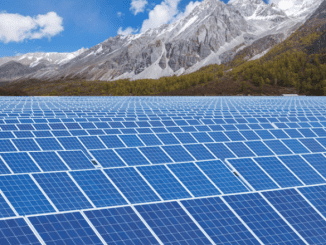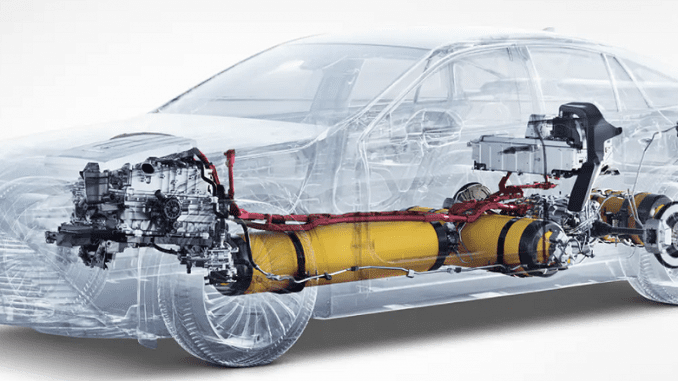
BRUSSELS, Belgium, September 20, 2021 (ENS) – Green hydrogen is today’s hottest new fuel source for electric vehicles, industrial processes and urban energy supplies. Businesses and governments are picking up on this new opportunity to cut costs and emissions simultaneously.
Based in Brussels, the international Hydrogen Council is a CEO-led initiative of 120+ companies with a vision of green hydrogen for a clean energy transition to a more climate-resilient future. The Council has formed a new partnership with the International Renewable Energy Agency, IRENA, to jointly advance green hydrogen across the energy system to make a contribution to global net-zero goals.
IRENA’s Director-General Francesco La Camera said, “Green hydrogen is a critical pillar for decarbonizing energy systems. With today’s agreement we will significantly increase knowledge exchange and international co-operation and coordinated action in this space.”
Executive Director of the Hydrogen Council Daryl Wilson says, “We are united by a shared vision for hydrogen as the enabler for faster and greater integration of renewable capacity, as well as greater cost-efficiency and optimisation at energy system level.”
The Hydrogen Council projects that hydrogen energy will cut emissions of the greenhouse gas carbon dioxide (CO2) by six billion tons by 2050. Many governments and companies are vying to lead the hydrogen revolution, and excitement is growing over this fuel that can provide power without climate-heating emissions.
Green is the cleanest form of hydrogen, but green is not alone – there are many colors of hydrogen.
Hydrogen Comes in Green, Blue, Gray, Brown and Black, Yellow, Pink, and Turquoise Too
Hydrogen (H2) is a colorless gas; classifying hydrogen by color indicates how clean the process of producing that hydrogen was.
Green hydrogen is the cleanest because it’s produced using electrolysis powered by renewable energy, such as solar or wind, energy sources that emit no carbon dioxide (CO2) or other greenhouse gases as they generate power.
Hydrogen is extracted from water. An electrolyzer is used to split water, H2O, into its two core elemental gases – hydrogen and oxygen. Both gases can then be stored and transported for use as needed.
Blue hydrogen is produced from natural gas and later decarbonized, using carbon capture and storage technologies. The captured carbon can be stored underground or used in industrial processes.
But blue hydrogen has many critics. With the inaugural UK sovereign green bond expected to be issued in the week of September 20-27, Dutch sustainable investor Triodos Bank has decided not to invest in the issue amid concerns around the use of proceeds – in particular, the inclusion of ‘blue’ hydrogen.
Triodos Bank was one of the first banks to join the Net-Zero Banking Alliance (NZBA) convened by the United Nations on April 21.
A total of 43 banks from 23 countries, with assets of $28.5 trillion, form Net-Zero Banking Alliance with its members committing to align operational and attributable emissions from their portfolios with pathways to net-zero by 2050 or sooner.
Gray hydrogen, too, is made using a fossil fuel such as natural gas, in fact, most hydrogen today is made using natural gas. It is bonded with carbon and can be separated from it with a process involving water called steam reforming, but the excess carbon generates CO2.
This hydrogen is called gray whenever the excess CO2 is not captured. Grey hydrogen accounts for most of the production today and emits about 9.3kg of CO2 per kg of hydrogen production.
Black hydrogen is the oldest way of producing hydrogen – by transforming coal into gas. The gas generated through coal gasification is called syngas. In this process, the hydrogen can be separated from the other elements – carbon dioxide and carbon monoxide – using special membranes.
This hydrogen is known as brown or black depending of the type of coal used: brown hydrogen uses lignite coal, while black hydrogen uses bituminous coal. This is a highly polluting process since neither CO2 nor carbon monoxide can be reused and are released in the atmosphere.
Hydrogen is tagged with other colors too.
Hydrogen labeled yellow means the electricity used for its electrolysis came from mixed sources, from renewables to fossil fuels, based on availability.
Turquoise indicates hydrogen separated from natural gas with solid carbon as a by-product – a technology now in the experimentation phase. The gas can be separated at very high temperatures, generating hydrogen and solid carbon in a process called methane pyrolysis. This hydrogen is called turquoise, or low carbon, hydrogen.
Pink hydrogen is obtained from electrolysis powered by nuclear energy. The government of France has plans to use its substantial nuclear fleet to generate the electricity to produce emissions-free hydrogen.
But will pink hydrogen be considered green in the European Union? Technically, green hydrogen is defined as using only renewable energy. The European Commission is due to decide later this year whether or not nuclear power will count as sustainable under its definition used to screen green investments, including pandemic recovery funding.
Hydrogen Can Be Explosive, Safety Engineering Can Help
With so many ways to produce the gas, why hasn’t hydrogen already taken off in a world thirsty for non-fossil fuels? The answer in one word – Danger!
While all fuels contain energy and can be hazardous if handled improperly, hydrogen has the highest flammability range and lowest required ignition energy of any fuel, and it tends to leak easily from storage tanks.
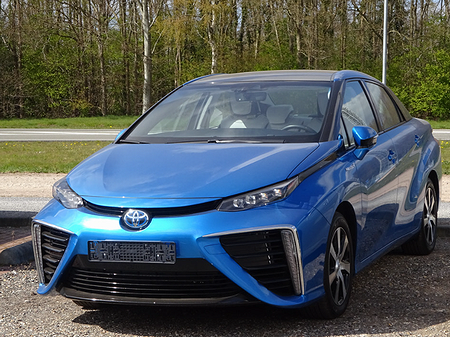
But hydrogen has been in widespread industrial use for more than 50 years and codes, standards, and design practices have been developed to enable safe use.
Hydrogen fuel cell electric vehicles combine hydrogen stored in a cylinder with oxygen from the air to produce the electricity that powers the car or truck, with water vapor as the by-product.
The two prime dangers from fuel cell and hydrogen-powered vehicles are the danger of electrical shock and the flammability of the fuel. In enclosed locations with normal temperatures, spilled liquid hydrogen will create enormous gas pressures, tearing apart vessels without safety valves.
The gas mixes easily with air, so explosive mixtures are formed. H2 ignites much more easily than gasoline or natural gas and heating may cause violent combustion or explosion.
Hydrogen reacts violently with air, oxygen, halogens and strong oxidants causing fire and explosion hazards, according to the International Consortium of Fire, Safety, Health and the Environment.
The DOE’s Office of Energy Efficiency & Renewable Energy points out that the design of safe hydrogen systems requires adequate ventilation and leak detection. Because hydrogen burns with a nearly invisible flame, special flame detectors are required, too.
On the plus side, hydrogen is non-toxic. Also, because hydrogen is much lighter than air, it dissipates rapidly when released, allowing rapid dispersal in case of a leak.
Some metals can become brittle when exposed to hydrogen, so selecting the right materials is important to the design of safe hydrogen systems, and, of course, training in safe hydrogen handling practices is a key element.
Hydrogen systems testing – tank leak tests, garage leak simulations, and hydrogen tank drop tests – have demonstrated that hydrogen can be produced, stored, and dispensed safely.
New technologies are being tested. At Northwestern University in Illinois, researchers have developed a highly effective, environmentally friendly method for converting ammonia into hydrogen. The idea of using ammonia as a carrier for hydrogen delivery has gained traction in recent years because ammonia is much easier to liquify than hydrogen and so is easier to store and transport. This breakthrough overcomes several existing barriers to the production of clean hydrogen from ammonia.
Safety measures are now built into both fuel cell electric vehicles and hydrogen fueling stations. The new H2 Tools website, built and maintained by the Pacific Northwest National Laboratory with funding from OEERE, offers a center for hydrogen safety information.
Today’s fuel cell cars and hydrogen fueling stations are designed to prevent hydrogen from leaking and have systems that shut down the flow of hydrogen automatically if a leak is detected, according to a report from the American Institute of Chemical Engineers posted on H2 Tools.
Leak-detecting sensors will shut off the flow of hydrogen if a leak is detected. The hydrogen fueling nozzle connects to the fuel cell car with a tight seal and stays locked as long as hydrogen fuel pressure remains in the hose.
Fuel cell cars have a protective device that prevents the vehicle from being driven while the fill hose is attached, eliminating “drive-offs” that can damage the hydrogen dispenser.
Fuel cell cars are crash tested to the same standards as all other vehicles. In case of a collision, the fuel cell car isolates the hydrogen in the storage cylinders so that only a very small amount of the gas can escape from broken fuel lines. First responders are trained in managing hydrogen incidents.
Washington is Paying Attention
The U.S. Department of Energy, DOE, under Secretary Jennifer Granholm, a former Michigan governor, has chosen hydrogen as the focus of the United States’ first Energy Earthshot
“The climate crisis calls for a different kind of moonshot,” the DOE says on its website. The agency’s “Energy Earthshots” idea is intended “to accelerate breakthroughs of more abundant, affordable, and reliable clean energy solutions within the decade.”
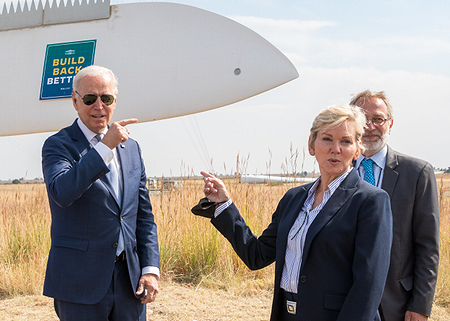
Launched June 7, Hydrogen Shot seeks to reduce the cost of clean hydrogen by 80 percent to $1 per 1 kilogram in 1 decade (“1 1 1”).
The Hydrogen Shot establishes a framework and foundation for clean hydrogen deployment in the American Jobs Plan, which includes support for demonstration projects. Industries are beginning to implement clean hydrogen to reduce emissions, yet many hurdles remain to deploying it at scale.
Currently, hydrogen from renewable energy costs about $5 per kilogram (2.2 lbs). Achieving the Hydrogen Shot’s 80 percent cost reduction goal can unlock new markets for hydrogen, including steel manufacturing, clean ammonia, energy storage, and heavy-duty trucks. This would create more clean energy jobs, reduce greenhouse gas emissions, and position America to compete in the clean energy market on a global scale. These efforts would ensure that environmental protection and benefits for local communities are a priority, according to the DOE.
On August 31, the opening day of the two-day Hydrogen Shot Summit, Secretary Granholm told the thousands of virtual attendees what’s behind the Energy Earthshots.
“We really do believe in what President Kennedy once noted, that if we choose to do hard things, that goal will serve to organize and measure the best of our energies and skills,” she said. “And that’s why we’ve launched our Energy Earthshots initiative, which is a series of ambitious goals all aimed at moving next-generation clean technologies from the lab to the field and then on to the market.”
Speakers included former Secretary of State John Kerry, who now serves as Special Presidential Envoy on Climate, and Senator Joe Manchin of West Virginia, a coal-producing state, and other lawmakers of both political parties, as well as Microsoft multi-billionaire and philanthropist Bill Gates, and industry leaders, and environmental justice advocates, and tribal representatives.
DOE shared results from the recent Request for Information and solicited feedback on pathways to achieving the Hydrogen Shot’s “1 1 1” goal of $1 for 1 kg of clean hydrogen in 1 decade. Breakout sessions on clean hydrogen production as well as deployment and financing helped identify key challenges and potential strategies to address them.
Granholm announced the Hydrogen Shot Fellowship to recruit innovators of diverse talent who can contribute to making Hydrogen Shot a reality.
“One of our priorities under this administration is building a bench of diverse and talented and dedicated clean energy professionals. The fellowship will give recent grads the chance to work alongside DOE Hydrogen Program managers and help us land our Hydrogen Shot,” she said, singling out students of systems analysis, fuel cell technology, electrochemistry, engineering or business, who are invited to visit the DOE’s Hydrogen Shot website for more on how to apply.
Green Hydrogen Is Growing Quickly
In just one week multiple deals were made, projects launched and reports issued. Let’s take the week of April 7-14, 2021, for example:
- – Plans were unveiled for a green hydrogen project using wind power near Glasgow, Scotland as the city prepares to host the United Nations’ annual climate conference COP26 in November. Postponed last year due to the pandemic, COP26 is expected to implement and strengthen the Paris Climate Accord.
- – Michelin Group CEO Florent Menegaux announced “Michelin in Motion,” a new 10-year diversified growth strategy in which hydrogen fuel-cell production and other non-tire businesses generate 30 percent of sales by 2030 – up from five percent in 2019.
“We want to generate stronger sustainable growth and create value that balances people, the planet, and economic performance,” Menegaux said. “Though we’re staying true to our core mission, we plan to strongly alter the Group’s identity by 2030 by expanding to new high-added-value activities around and beyond tires.”
With Symbio, its joint venture with auto parts maker Faurecia, Michelin has started construction on the largest industrial facility in Europe dedicated to hydrogen fuel cell production in the city of Lyon in eastern France. This factory will supply fuel cells for a new line of cargo vans produced by Stellantis, formerly Fiat-Chrysler.
- – Transmission systems operators from 21 countries said during an industry webcast this week said that Europe could switch 40,000 kilometers (24,800 miles) of natural gas pipelines to hydrogen by 2040.
- – Italian truckmaker Iveco, U.S. electric and hydrogen vehicle maker Nikola, and German gas network operator OGE announced that they are jointly developing a hydrogen transportation and fueling network.
- – A McKinsey report found that by 2050, the U.S. hydrogen industry could generate an estimated $750 billion per year in revenue and support 3.4 million jobs.
- – The Fuel Cell and Hydrogen Energy Association (FCHEA), a U.S. industry group, predicted that by 2050 a rapid scale-up of hydrogen production could reduce the whole nation’s carbon emissions by 16 percent, reduce carbon emissions in the U.S. transportation sector by 30 percent, and lower NOx emissions by 36 percent.
FCHEA President Morry Markowitz said, “Hydrogen energy is a solution for many difficult-to-decarbonize industries like transportation, electricity generation, and steel and cement production. The growth of the hydrogen industry will also lead to the creation of well-paying engineering, manufacturing, sales and service jobs. That’s why it’s essential we invest in hydrogen now.”
- – Toyota introduced its second generation Mirai hydrogen fuel cell electric vehicle in Australia.
- – Research and Markets issued a report projecting that the global hydrogen electrolyzer market will reach US$406.6 million in 2024, growing at a compound annual growth rate of 6.57 percent from now through 2025.
- – Japan and the United Arab Emirates signed a memo of cooperation to jointly consider developing an international hydrogen supply chain. The two governments intend to conduct research on production and use of hydrogen derived from renewable energy, and from fossil fuels with carbon dioxide storage. The fuel would be made and used in Abu Dhabi and also exported to Japan.
All these events happened in one week this past April.
Demand for Wind, Solar Power Expected to Boom
“Wind is already 16 percent of Europe’s electricity. But Europe will need many more wind farms to meet the demand for renewable electricity. And to deliver Europe’s aspirations of being a global leader in renewable hydrogen technology and solutions,” said Wind Europe CEO Giles Dickson. “As the voice of Europe’s wind industry, WindEurope is actively engaging in the political development around renewable hydrogen.”
WindEurope acts as the facilitating organisation for one of six roundtables responsible for the operational work of the European Clean Hydrogen Alliance. The roundtable on “Clean Hydrogen in the Energy Sector” considers questions of re-electrification, storage, electricity grids and balancing. Members of the roundtable are in charge of building a thematic pipeline of promising scale-up projects as well as an investment agenda in these areas. They may also provide input on future regulations and standardization.
On March 31, more than 20 signatories joined forces with SolarPower Europe and the Renewable Hydrogen Coalition to demand that the European Commission promote the highest sustainability standards in the EU Taxonomy for the production of clean hydrogen.
François Paquet, impact cirector of the Coalition, said, “The Renewable Hydrogen Coalition calls on the European Commission to be crystal clear in its EU Taxonomy about the solutions that are truly sustainable. Prioritizing renewable hydrogen as one of these solutions is indispensable to implementing the EU Hydrogen Strategy and becoming the first climate-neutral continent by 2050.
Developing the Clean Hydrogen Economy
Based on hopes that a clean hydrogen economy can help to conquer climate change, reduce pollution and noise and be highly profitable too, new partnerships and business agreements are springing up around the world, particularly over the past year.
A report by the Hydrogen Council released in February shows rapid acceleration of hydrogen projects in response to government commitments to deep decarbonization. Developed in collaboration with McKinsey & Company, “Hydrogen Insights 2021: A Perspective on Hydrogen Investment, Deployment and Cost Competitiveness” https://hydrogencouncil.com/en/hydrogen-insights-2021/offers a comprehensive perspective on market deployment around the world, investment momentum and implications on cost competitiveness of hydrogen solutions.
Benoît Potier, chairman and CEO of Air Liquide and co-chair of the Hydrogen Council, said, “A huge step in the fight against climate change has been taken, as both governments and investors now fully grasp the role hydrogen can play in the energy transition. Now, to bring this potential to its full fruition, governments, investors and industrial companies must work together to scale up the hydrogen ecosystem around the world. Their collaboration in the coming months will allow for many of the projects around the world to become a reality and to turn hydrogen into a new, clean, abundant and competitive energy carrier.”
As of early 2021, over 30 countries have released hydrogen roadmaps and governments worldwide have committed public funding in support of decarbonization through hydrogen technologies.
No less than 228 large-scale projects have been announced along the value chain, with 85 percent located in Europe, Asia, and Australia. These include large-scale industrial usage, transport applications, integrated hydrogen economy, infrastructure, and giga-scale production projects. If all announced projects come to fruition, the Hydrogen Council projects that total investments will reach more than US$300 billion in spending through 2030.
Projects in the Current Hydrogen Universe
In the United States, a Sandia National Laboratory team of materials scientists and computer scientists, with some international collaborators, have spent more than a year creating 12 new alloys – and modeling hundreds more – that demonstrate how machine learning can help accelerate the future of hydrogen energy by making it easier to create hydrogen infrastructure for consumers.
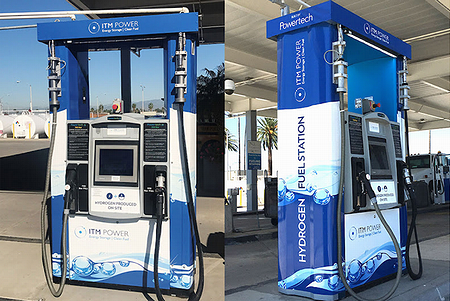
The team also got results that have big implications for small-scale hydrogen generation at hydrogen fuel cell filling stations. “These high-entropy alloy hydrides could enable a natural cascade compression of hydrogen as it moves through the different materials,” researcher Vitalie Stavila said, compared to the current practice of compressing hydrogen mechanically.
In its Hydrogen Strategy, the European Commission in 2020 pledged to ramp up electrolyzer capacities for renewable hydrogen to six GW by 2024 and 40 GW by 2030. The strategy includes targets for the production of renewable hydrogen: one million tonnes by 2024 and 10 million tonnes by 2030.
From 2030 to 2050, renewable hydrogen technologies will reach maturity and will be deployed at a large scale across all hard-to-decarbonize sectors, the European Commission projects.
The Commission expects renewable hydrogen to become a globally leading technology for emission reduction in sectors such as heavy-duty transport, aviation, shipping or in industrial processes such as steel and chemicals production. Europe wants to lead this transition with innovative, renewables-based technologies.
In February, Dutch gas grid operator Gasunie and the Port of Groningen launched the NortH2 consortium with plans to develop a “European Hydrogen Valley” with at least 10 gigawatts of dedicated offshore wind capacity in place by 2040. In July 2020, Shell won a 759 MW offshore wind tender along with the Dutch utility Eneco. They plan to build a super-hybrid project combining the offshore wind turbines with elements of solar, storage and hydrogen production.
In March 2020, Japan opened world’s largest green-hydrogen plant near the site of the 2011 Fukushima nuclear power plant meltdown disaster. Partners, including Toshiba, Tohoku Electric Power, and Japan’s New Energy and Industrial Technology Development Organization, say the Fukushima Hydrogen Energy Research Field (FH2R) is most powerful electrolyzer yet to produce hydrogen from clean power sources.
FH2R uses a 20MW solar array, backed up by renewable power from the grid, to run a 10MW electrolyzer at the site in Namie Town, Fukushima Prefecture. The system can produce up to 100kg of hydrogen an hour, said the partners. The project will be used as a test bed for mass production of green H2, with initial output directed to fuel hydrogen cars and buses in Japan, including some to be used at the Tokyo Olympics later this year.
In China, Ma Yongsheng, president of the giant China Petroleum & Chemical Corporation Sinopec and a member of the Chinese Academy of Engineering, has proposed to accelerate hydrogen energy industry development with “top-level design, core technology R&D, standard system formulation and industrial policy support.”
In China the hydrogen energy industry remains in the pilot demonstration and market promotion stage. Meanwhile, the China Hydrogen Energy Alliance predicts that by 2050, China’s annual hydrogen demand will be close to 60 million tons. Filling this demand would help the country to cut 700 million tons from its CO2 emissions. At the end of 2020, China had an inventory of 7,352 fuel cell vehicles, 128 hydrogen refueling stations built with 101 in operation, ranking second worldwide only to Japan.
Sinopec, as an official partner of the 2022 Winter Olympics, will guarantee supply of clean energy for the Game’s infrastructure construction and operations to empower a “Green Winter Olympics.”
In December 2020, the California Energy Commission (CEC) awarded US$7.3 million to Equilon Enterprises, known as Shell Hydrogen, to deliver the first eight of 51 proposed Shell hydrogen refueling stations. This funding is part of a multi-year program supported by a proposed award of $40.5 million from the CEC earlier in 2020.
If successful in securing full funding, Shell Hydrogen will install hydrogen refueling equipment at 48 existing Shell retail stations, upgrade two current Shell Hydrogen stations and add light-duty fueling dispensers and positions at one existing Shell Hydrogen heavy-duty truck station. Toyota and Honda have agreed to continue their strong support for FCEV sales in the state.
BP and its solar joint venture Lightsource BP are exploring a potential green hydrogen plant in Australia powered by 1.5 gigawatts of wind and solar. A feasibility study has been done for the huge green hydrogen operation that would produce the hydrogen, convert it into “green ammonia” and export it internationally by ship. Lightsource BP, rebranded from Lightsource Renewable Energy in 2018, is the largest solar developer in Europe, third largest in the world outside of China.
The British company E.E.W. Eco Energy World decided in March to develop one of the world’s largest green hydrogen and solar plants in Australia. Located in Raglan near the deep water Port of Gladstone, Queensland, the project’s total cost represents an estimated half a billion in Australian dollars.
Saudi Arabia is constructing a $500 billion city of the future in the desert on the Red Sea called Neom to house a million people; it will be fueled with green hydrogen. In July the U.S. industrial firm Air Products & Chemicals joined forces with ACWA Power in Saudi Arabia to develop a 4 GW green hydrogen and ammonia facility. They expect the first ammonia to produced in 2025. ACWA Power is a developer, investor, co-owner and operator of a portfolio of power generation and desalinated water production plants in 10 countries in the Middle East, Africa and Southeast Asia.
In northeast Brazil, a US$5.4 billion green hydrogen hub is planned, believed to be the first of its kind in Latin America. In February, the Government of Ceará State, the Federal University of Ceará, and the private sector signed a memo of collaboration, the first step in the process of installing the green hydrogen hub. Planned for the Pecém Industrial and Port Complex, 60km from Fortaleza, the hub will be built by Australia’s Enegix Energy.
The world’s first fleet of double decker hydrogen buses rolled into service in Aberdeen, Scotland in January. Run by First Bus, one of Scotland’s largest bus operators, project leaders Aberdeen City Council says the 15 hydrogen buses are a major step forward in reducing climate change, as cities across the world see how far innovation in the transport industry has come. Plans are in place for Aberdeen to make its own hydrogen to power the buses.
The Spanish utility Endesa announced in February it applied to the Ecological Transition Ministry to develop 23 renewable hydrogen projects in Spain, involving 340MW of electrolyzer capacity fed with an additional two GW renewable power capacity. In mainland Spain, Endesa is seeking to develop at least eight separate renewable hydrogen projects that will total 315 megawatts of electrolyzer capacity and 1.8GW of renewable capacity by investing €2 billion.
An international consortium of 40 organizations from Spain, Germany, Switzerland, Italy and Greece launched ORANGE.BAT in February to focus on incorporating renewable hydrogen into the ceramics industry in Europe. Energy company Enel Green Power will provide technical expertise and German cleantech company Sunfire will supply a 100MW pressurized alkaline electrolyzer, planned to start operating in early 2024.
The large-scale pilot plant is planned for Castellon in eastern Spain, in one of the most important ceramic industrial clusters in Europe.
A group of 30 European energy players officially launched HyDeal Ambition in February with the aim of delivering 100 percent renewable hydrogen across Europe at €1.5/kg – including transmission and storage – by 2030.
The Dutch government has pledged to invest up to €338 million (US$401.5m) in the expansion of the country’s green hydrogen sector as part of its climate plan. The money will go to projects promoting the production of green hydrogen and its deployment to energy-intensive industries in Northern Netherlands, Amsterdam, Rotterdam and Zeeland.
The European economy, with its high energy prices and dependence on Russian natural gas, is embracing green hydrogen by providing funding for construction of electrolysis plants and other hydrogen infrastructure. Germany has allocated the largest share of its clean energy stimulus funds to green hydrogen. The European Commission wrote in a July 2020 strategy document, “It is the missing part of the puzzle to a fully decarbonized economy.”
Featured image: A schematic drawing of a fuel cell electric Toyota Mirai, showing how hydrogen from the fuel tank and air entering from the intake grille meet in the fuel cell stack. There, a chemical reaction involving the oxygen in the air and hydrogen creates electricity, powering the Mirai. In the end, the only by-product is water. 2021 (Image courtesy Toyota)

